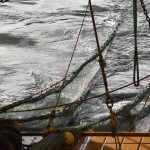The asset value of New Zealand’s commercial fish stocks, as managed under the Quota Management System (QMS), has grown 47 percent since 1996. The number of species managed under the system, introduced in 1986 to manage New Zealand’s fisheries, rose from 26 in 1996 to 96 in 2009.
In 2009 the top 20 species, including hoki, rock lobster, paua, and blue cod, comprised 91 percent of the fish stocks’ total value. Hoki contributed the highest value at $815 million, or 20 percent of the total asset value.
In 2009, jack mackerel, dredge oysters, and stargazer replaced alfonsino, hapuku and bass, and scallop in the top 20 species by asset value.
These statistics are from the Fish Monetary Stock Account: 1996-2009 released by Statistics NZ today.
The report, which is based on information from the fishing industry, measures the asset value of New Zealand’s commercial fisheries; it excludes aquaculture, recreational and customary catch, and commercial species not currently managed by the QMS.
The Fish Monetary Stock Account: 1996-2009 is part of a series of statistics that can be used to monitor the interaction between the economy and the environment.








